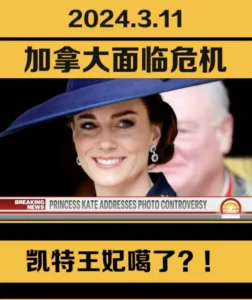人们很容易把越南看成小中国。
两国都是人口众多的亚洲国家,它们的一党制政府都一头扎进自由市场资本主义。
但越南并没有把毗邻的、共享漫长复杂历史的中国当成作为学习榜样的老大哥。
它把中国视为地区威胁者,一个残酷的竞争对手,廉价、质量低劣商品的源头(这点很惊人)。
在越南,从学童到政府官员,修理中国的论调相当时髦。
真正的消费经济的先决条件之一是商品对势利顾客的吸引力、能力以及购物者在产品与品牌之间作区分的意愿。
越南显然进展顺利。
我在越南各个地方都可以听到对所有中国制造的东西的贬斥。
在胡志明市外的耐克工厂,经理们抱怨来自中国的假货泛滥。
在市区,中国商品的地位显然很低。
经济学家、前中央经济管理研究所所长Le Dang Doanh以穿定制西服的华尔街银行家谈论沃尔玛罩衫的口吻谈论进口的中国制造服装。
他表示,中国制造的服装是给“水牛男孩(骑着水牛在田间工作的乡下男孩)”的。
美国游客往往透过我们参与越战的灾难性20年的透镜看待越南历史,但令他们惊讶的是,战争在定义越南人对美国人以及美国商品的态度以及集体记忆方面的作用很小。
这可能只是因为我们越南东道主的礼貌,又或者是因为越南极端年轻。
大约40%的越南人口出生在西贡沦陷之后。
当然,纪念馆和纪念碑还是有的,但它们很客气,例如河内有纪念麦凯恩(John McCain)1967年被击落的地点的小小水泥雕塑。
在胡志明市的战争遗物博物馆,宣传展品包括两名美国士兵向一名囚犯施水刑的残酷照片,但人群往往分成两股,学校的孩子们兴高采烈地在被俘的美国坦克前面摆姿势。
然而,我们所遇见的越南政界商界人士以及孩子们似乎把美国视为越南长期追求独立过程中挡开的众多帝国主义列强之一。
没有很强烈的感觉。
越南政权已经决定在经济上迈进,它需要资本和投资,而且和美国、日本和欧洲共命运的意愿比和中国共进退的意愿强烈。
在我们的旅程中,我们不断听到越南品牌和消费者怎样通过提高质量和注重品牌击退廉价中国进口品的故事。
在城里的服装店,消费者更可能找到国内制造的服装,而不是中国制造的。
服装制造商Garco 10的总干事Nguyen Thi Thanh Hu表示,如今廉价产品的时代已经过去了。
去年夏天,越南公司Viet Tien和美国Perry Ellis公司签订协议,特许向越南市场供应它曼哈顿线的服装。
一位高级贸易官员表示,在九十年代,廉价的中国啤酒充斥市场。
但像333、西贡等越南品牌和虎啤(Tiger Beer,外国品牌,但是国内制造的)等开始在电视上做广告。
同时,富裕的消费者变得更成熟。
几年前,中国廉价摩托车的到来迫使日本公司大幅度减价。
但有可支配收入的越南消费者如今的关注点不局限在价格上。
这位贸易官员表示,他曾为女儿买了一辆中国制造的摩托车,但她在一年后就把它卖掉了,换了一辆日本制造的摩托车。
当被问及喜不喜欢蒙塔娜(Hannah Montana,美国歌手),胡志明市一所公立学校的学生们一致大声表示喜欢。
16岁的Bang Thanh戴着时尚太阳眼镜,他表示,“中国出口到越南的产品不是很好,他们在中国生产并出口到这里的本田摩托不好。
”
当然,这种对中国所有东西的怨恨不仅仅是消费者意识的成熟,还渗透着民族自尊心。
越南人为本地的产业和产品感到极端自豪。
有一天,我们和年轻的越南商人在胡志明市的一家中餐馆用午餐。
丰盛的菜肴十分美味。
但坐在旁边的越南执行官就不是那么喜欢:“中国菜太油腻了”。
(原标题:廉价贸易;作者:Daniel Gross)
Cheap Trade
Why Vietnam is turning up its nose at Chinese goods.
It’s tempting to view Vietnam as a mini-China. Both are populous Asian countries whose single-party governments are engineering a headlong rush into free-market capitalism (of a fashion). But Vietnam doesn’t regard China, with whom it shares a border and a long, complicated history, as an older brother to emulate. Rather, it sees it as a regional bully, a harsh competitor, and—surprise!—a source of cheap, junky merchandise. Duncan Hunter, the obscure congressman whose presidential campaign seems based largely on hostility to illegal immigrants and China, could be very popular here. For in Vietnam, from school kids to government officials, China-bashing is very much in vogue.
One of the prerequisites of a true consumer economy is snob appeal, the ability and willingness of shoppers to draw invidious distinctions between classes of products and brands. Vietnam is clearly well on its way. Everywhere I went I encountered high-level slagging of all things Chinese-made. At a Nike factory outside Ho Chi Minh City, managers complained about counterfeit shoes flooding in from China. In urban areas Chinese goods are distinctly low-status. Le Dang Doanh, an economist and former president of the Central Institute for Economic Management, spoke about imported Chinese-made clothes the way a bespoke-suit-wearing Wall Street banker might talk about Wal-Mart overalls. Chinese-made clothes, he said, are for the “buffalo boys”—country kids seen riding water buffaloes to work in the fields. And for those in the know, status matters. Our fixer and guide, Ha Tran, described her mortification when, upon returning from the United States with clothes bought from Old Navy as presents, she discovered that they were made not in America but in Vietnam.
For American visitors, who tend to view Vietnamese history through the lens of our disastrous 20-year involvement, it’s surprising how little the war defines collective memory and attitudes toward Americans and American goods. It could be that our hosts were simply being polite. Or it could be a function of the extreme youth of Vietnam. About 40 percent of the population was born after the fall of Saigon. There are memorials and monuments, to be sure, but they’re unobtrusive, like the small cement statue in Hanoi that marks the spot where John McCain was shot down in Truch Buch Lake in 1967. At the War Remnants Museum in Ho Chi Minh City, where the propagandistic exhibits include a chilling photograph of two American soldiers water-boarding a prisoner, the crowd was roughly divided between tourists and Vietnamese school kids gleefully posing on captured American tanks. Yet the Vietnamese politicians, businesspeople, and kids we met seemed to regard the United States as one in a list of imperial powers the country had fended off in its long quest for independence. No hard feelings. The regime has decided that it is moving forward economically, that it needs capital and investment, and that it would much rather throw in its lot with the United States, Japan, and Europe than with China.
In our travels we heard repeated stories of how Vietnamese brands and consumers had fought off cheap Chinese imports by improving quality and focusing on brands. In urban clothing stores consumers are far more likely to find domestically made clothes than Chinese ones. “Now the time for cheap products has gone by,” said Nguyen Thi Thanh Hu, general director of apparel maker Garco 10, which derives about 20 percent of its sales from the Vietnamese consumer market. Last summer a Vietnamese company, Viet Tien, signed a deal with Perry Ellis to license its Manhattan line of clothes for the domestic market.
In the 1990s, said a senior trade official, cheap Chinese beer flooded the market. “Ten years ago eight of every 10 bottles of beer in the market were Chinese-made, and everybody was afraid,” he said. But Vietnamese brands like 333, Saigon and Tiger Beer (foreign-owned but brewed domestically) took marketing cues from Western beer companies and began advertising on television. As they did so, better-off consumers grew more sophisticated. “In the past we just drank any beer we had,” said the trade official. But today “there is no Chinese [brand] in the market to compare.”
The arrival of cheap Chinese motorbikes a few years ago forced Japanese firms to cut prices significantly. But Vietnamese consumers with disposable income now look beyond price. The trade official said he had bought a Chinese-made motorbike for his daughter, but she sold it after a year and purchased a Japanese-made one instead. At Le Quy Don High School, a magnet public school in Ho Chi Minh City, we chatted with students (most disconcerting flat-Earth moment: the unanimous roar of approval that arose when we asked if they liked Hannah Montana). “The goods imported to Vietnam from China are not really good,” Bang Thanh, a 16-year-old wearing stylish sunglasses, told me. “The Honda motorbikes they make there and bring in are no good.”
Of course, national pride—and not simply a rising sense of consumer sophistication—filters into the resentment of all things Chinese. The Vietnamese are fiercely proud of their local industries and products, especially their food. One day we met for lunch with young Vietnamese businesspeople at the Chinese restaurant in the New World Hotel in Ho Chi Minh City. The sumptuous multicourse meal was delicious, several orders of magnitude better than Empire Szechuan. But the executive seated to my left wasn’t impressed: “Chinese food is too oily.”
译文为摘译,英文原文:http://www.newsweek.com/id/73745








